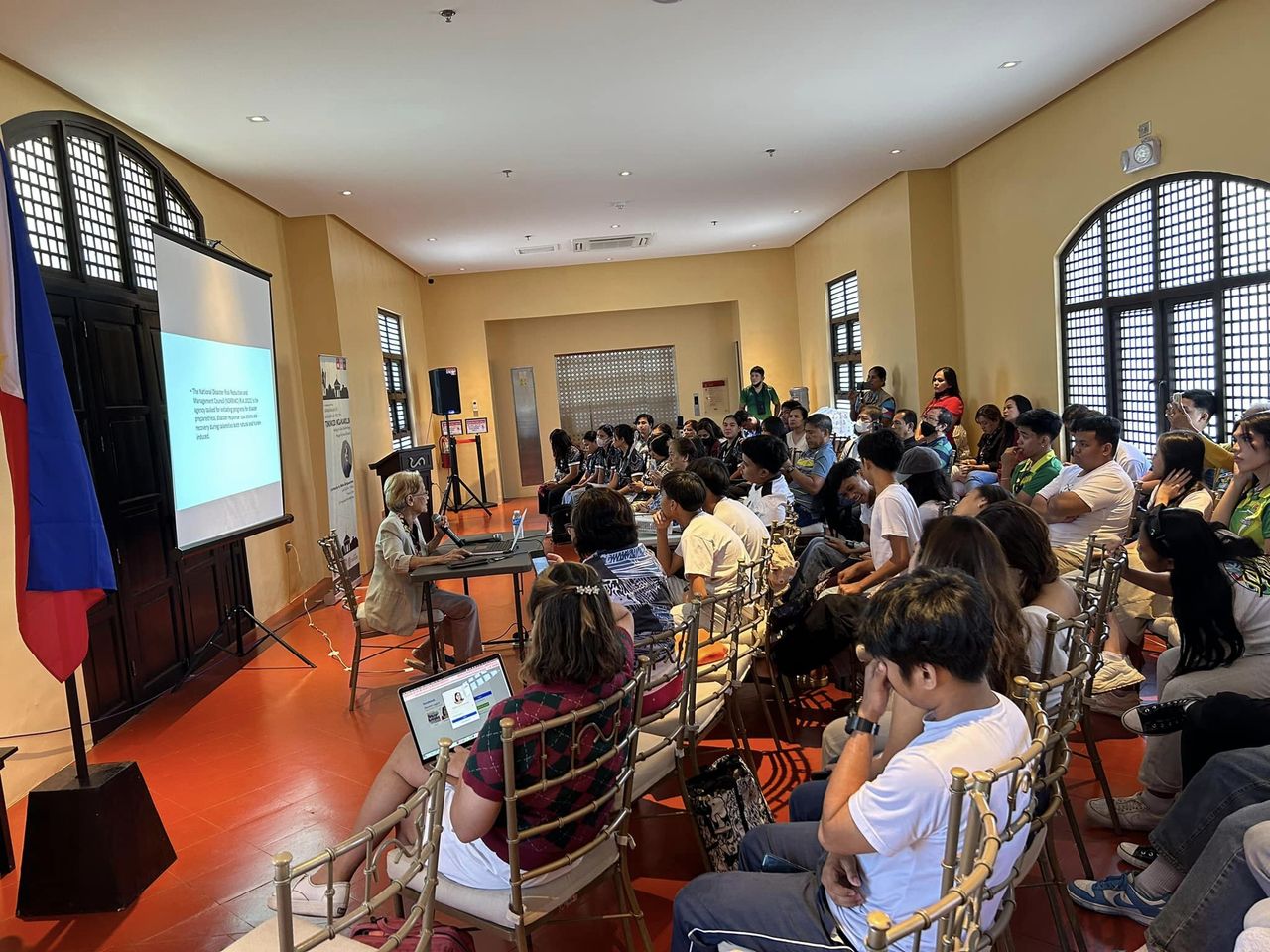In the event of disasters and conflicts, it is not just people who suffer but our cultural sites as well.
Historic buildings, cultural monuments and markers suffer from the brunt of earthquakes, supertyphoons and massive flooding, terror attacks and other forms of conflict.
The Gaza-Israel war, for example, according to UNESCO already reduced to rubbles at least 41 cultural sites. Built heritage structures are being used as target and cultural sites for military purposes.
Here in the Philippines, Marawi City’s heritage masjids (mosques) for example have been destroyed in a 2017 siege and made foxholes, sort of, during fire exchange in a span of five months.
APRIL 18 - WORLD HERITAGE DAY
On the 40th celebration of World Heritage Day or the International Year of Monuments and Sites on April 18, 2024, the National Museum of the Philippines - Cebu initiated a lecture that looks into the relevance to this day of the 60-year-old Venice Charter.
The 1964 International Charter for the Conservation and Restoration of Monuments and Sites stresses the importance of respect for original fabric, precise documentation of any intervention, significance of contributions from all periods to the building’s character, and the maintenance of historic buildings for socially useful purposes.
A member of the International Council on Monuments and Sites (ICOMOS) Philippines took to the lecture her thorough knowledge on intangible heritage conservation, appropriate rehabilitation and restoration works, and proper response to secure a cultural site after disasters and conflicts through the lens of the 16 articles of the Venice Charter to preserve the legacy of attributes and artifacts of tangible heritage.
In her lecture, Architect Melva Rodriguez-Java, an expert in built heritage conservation, presents examples of structures in Cebu that have either met or violated standards in built heritage rehabilitation and restoration works based on the standards set by the Venice Charter.
The Venice Chater, being a fundamental text, set the main principles for conservation and restoration of historic sites and monuments and remains one of the most influential guidance documents on heritage to this day. The Venice Charter first highlights the importance of safeguarding cultural heritage for the well-being and continuity of communities and traditions.
THE LECTURE
Rodriguez-Java discussed the 16 articles of the Venice Charter in relation to the conditions of the different heritage structures in Cebu City such as Patria de Cebu (across Cebu Metropolitan Cathedral), Gotiaoco Building (now the Sugbu Chinese Heritage Museum), the 1730 Jesuit House in Parian district declared a National Cultural Treasure, and other structures over 50 years old deemed important cultural properties.
She also cited heritage churches in Bohol destroyed by a magnitude 7.2 earthquake in 2013.
In her lecture dubbed “Tinukod nga Kabilin (Looking at Cebu’s built heritage through the Venice Charter),” Rodriguez-Java cited the crucial role of conservation stakeholders in upholding integrity in built heritage rehabilitation and restoration works.
In Bohol, for example, debris of heritage churches were reported to have been collected by residents to rebuild or repair their houses. This should not have happened had stakeholders been quick to assess and cordon the area, collect data on physical materials at the area, put proper signages that gathering of these materials outside of the church premises is a big no-no, and proper reporting to concerned agencies for restoration works.
She pointed out that a number of important structures in Cebu and other areas in the Visayas could have been saved from demolition or from inappropriately designed development works had the Venice Charter been enforced stringently.
Java has enjoined participants such as students, tour guides, teachers, and heritage enthusiasts to help increase awareness on the importance of coordinating with proper agencies on planned rehabilitation and restoration works for built heritage structures.
While we all know that ancient monuments and buildings are an asset to society these might not be able to continue being an asset for years because of various natural and man-made threats.
She mentioned that one of the big threats to the survival of built heritage structures is the obvious lack of knowledge about the Venice Charter of today’s construction stakeholders.
ROAD TOUR
In a road tour at Cebu City's downtown area, after the lecture in the National Museum of the Philippines - Cebu, showed how Vision Theatre along Colon Street is left ripped of its face value; spaghetti wires have also marred its vista. Vision Theatre survived World War II but is reduced to an ugly sight, now devoid of its grandeur and glory.
Another beautiful site that almost bowed out to high-rise development is Patria de Cebu (across Cebu Metropolitan Cathedral).
Java said that along with her colleagues she had to fight for the retention of its facade. Other than the historic value of the building, the Patria de Cebu was constructed with the help of young boys involved actively in a Catholic association. She recounted that the young boys molded hollow blocks by their own hands to help construct the building. After completion of each piece of hollow block, the young boys would then pray “Hail Mary” over the blocks. Thus, the blocks came to be called as the “Hail Mary” hollow blocks.
Further, she mentioned of a bus rapid transit project along Osmeña Boulevard from Fuente Osmeña rotunda that has got the ire of heritage conservationists and enthusiasts because its ultramodern design has marred reportedly the vista corridor to the Capitol Building, the seat of the provincial government, which again is another important cultural property.
Massive infrastructure works by developers who are deadpan to the Venice Charter are a leviathan to the condition and status of our built heritage structures.
Java also underscored the importance of publishing works done to heritage sites based on Article 16 which reads that in all works or preservation, restoration and excavation, there should always be precise documentation in the form of analytical and critical reports, with illustrations or drawings, and photographs. These records should be placed in archives and public institutions and made available to research workers. It is recommended that reports should be published.
ENVIRONMENTAL IMPACT
According to Java, adaptive use of heritage structures remains the best option rather than building new ones expected to exhaust further our natural resources and contribute to the garbage piles in dumpsites.
Java shared an inspirational quote from Pope Francis’ letter on the care for our common home - the earth - in capping her lecture.
“The fruits of the earth belong to everyone. We are treating the earth as if it has unlimited resources. We are taking more than our fair share. Mother earth is a pile of filth.”





